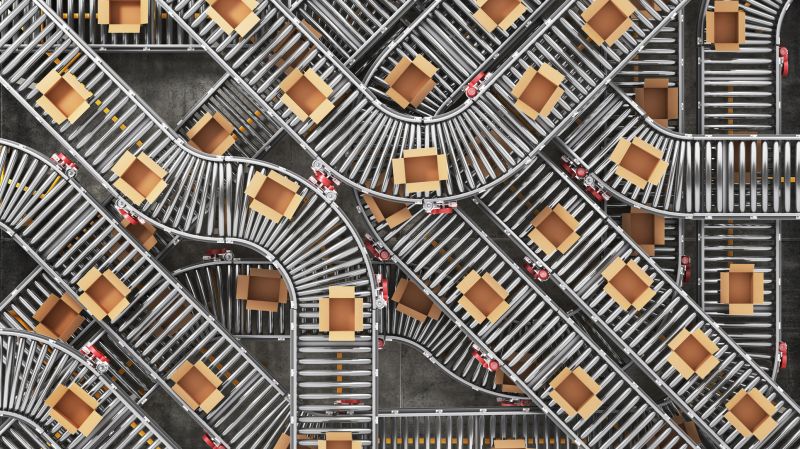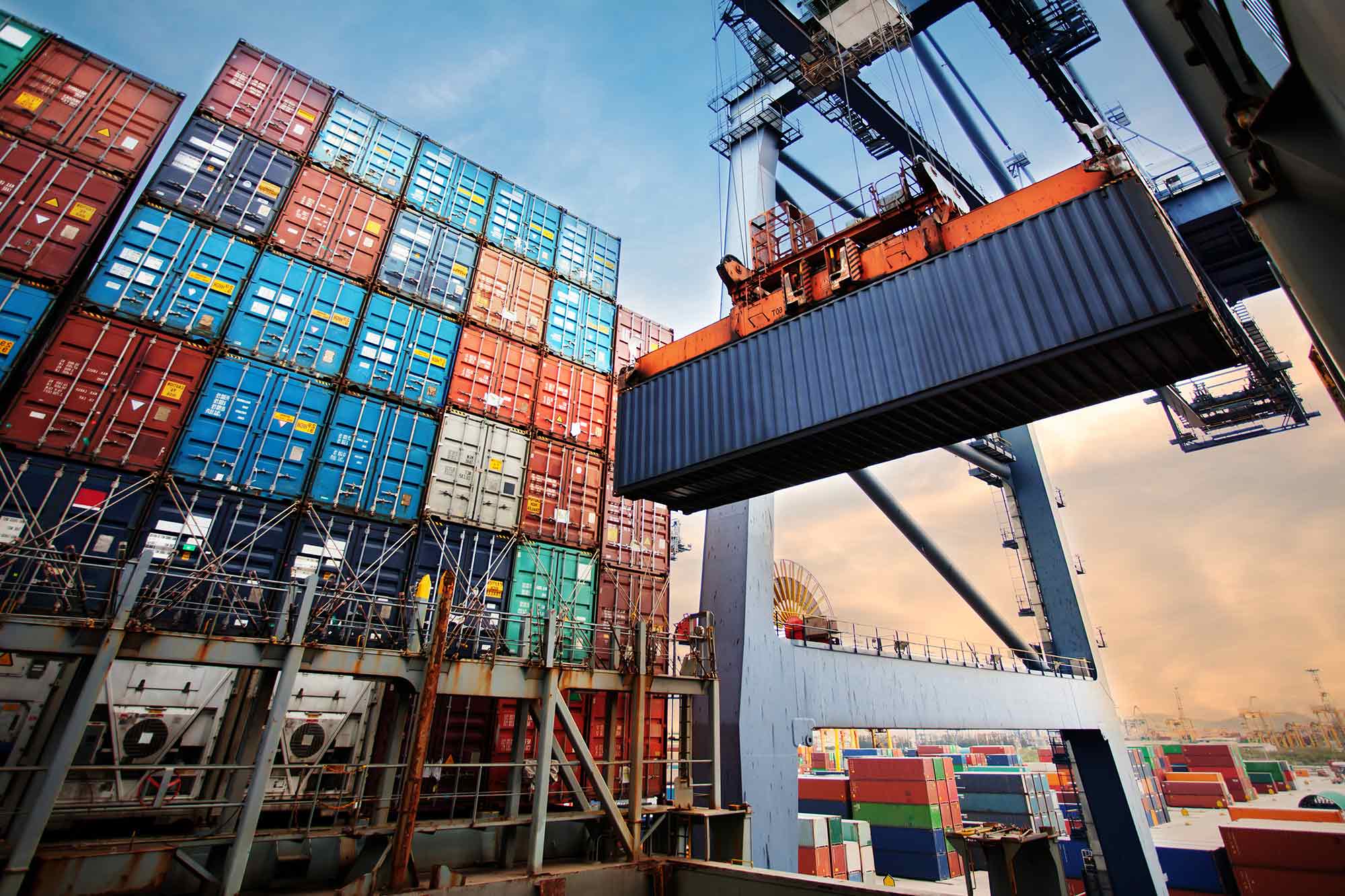The Root of Supply Chain Woes? It’s Us
To clean up global trade and make it more resilient, companies must confront a force of nature

Disruption is the dominant theme for multinational supply chains, or global value chains as researchers term the intricate web of international production, trade and investments. Rising protectionism, a post-Covid hangover and environmental stresses are conspiring to make international trade one of the most complex executive portfolios. Resilience is the name of the game, but few, as yet, know how to play it successfully.
Smith Business Insight senior editor Alan Morantz asked Anthony Goerzen to explain some of the key dynamics driving supply chain decisions. Goerzen is the Sobey Professor of International Business at Smith School of Business. He has done extensive research into the strategic management of firms competing in international markets.
Many companies are trying to address environmental concerns in supply chain management but there are huge challenges. How are multinationals trying to make the transition?
All of my PhD students are looking at that core idea. What do we need to do differently and better to achieve a smaller environmental footprint?
We’ve interviewed many multinational organizations and the managers who run them, and we find that there’s a great deal of sympathy and interest in these issues. I tell my students that managers are a lot like people, you know? They want the same things for themselves and for their families. But how to achieve [environmental gains] is a very thorny question.
If you look at strategic management courses in any university, they always have certain fundamental principles they try to impart. One has to do with the nature of competitive advantage. You need to look inside the firm for what resources and capabilities underpin that competitive advantage. How do we leverage that advantage into greater value for our shareholders?
The challenge is that, given the many issues facing society and business, this notion of looking internally and leveraging our advantage to capture more value for ourselves is a dated idea. Consumers, regulators and various watchdogs, including non-governmental organizations and the media, are compelling firms to focus on issues beyond shareholder interests. Concerns around social justice and environmental stewardship, even at points far removed from the downstream firm, are becoming hot issues for managers to deal with.
Isn’t it true, though, that consumers are at the core of these strategic decisions, and companies don’t want to get too far ahead of them?
The golden rule of business is that the customer is always right. And the second rule of business is when the customer is wrong, see rule number one. But we can see that oftentimes what customers demand is not conducive to creating social justice or perhaps not conducive to environmental stewardship. If you were looking to buy a T-shirt for $2 or $35, quality being the same, we typically would choose the lower price. That’s how most consumers make choices.
So there’s always this huge downward pressure on prices by consumers, and businesses will respond to that. They will give consumers what they want. Cheap clothing. Cheap food, even if it means bringing strawberries in from Chile rather than buying them locally, if there’s a price advantage.
Many of these basic ideas of who the customer is within your business model need to be rethought, because sometimes the customer is wrong. We need a different kind of leadership. In my view, this new leadership encompasses a broader view of social and environmental issues. It’s one that brings the economic power of downstream companies to bear on the pressing issues of our time.
There were two big themes at the most recent World Economic Forum meeting in Davos. One was that geopolitical risks are forcing companies to be more resilient, and the other was that globalization requires diversification, not decoupling. Does that line up with what you see?
With respect to resilience, it’s on the agenda of every organization. When Covid began, there were organizations in the Kingston [Ontario] area, even small non-manufacturing businesses, that discovered their supply chains wound all the way to the other side of the world, and that they were faced with supply issues they weren’t aware of.
This led people to ask whether supply chains should be shorter. And the answer is, all things being equal, sure. But again, it’s always a price-quality issue. Consumers make choices based on the best quality for the cheapest price. It’s not like any business can simply say, We’re only going to buy from, say, North American suppliers, because they have to keep their eye on how they can get the best price and the best quality from that relationship. In some cases, like cobalt that’s used in rechargeable battery production, there are no local suppliers, so you have no choice but to engage in these longer supply chains.
When I think of resilience in the context of supply chains, I think of redundancy, the need to build in buffers or backups for the supply chain to be resilient. But redundancy is the opposite of efficiency. How are multinationals expected to resolve this tension point?
What you’re describing is exactly the issue. The reason why supply chains have become very long is that there’s been a search for the best price-quality ratio. So it might be that the quality is also lower, but the price is even lower still, and so it’s seen as a tolerable input.

The trade-off between resilience and redundancy, between paying higher prices for the intangible benefits of resiliency against the tangible costs of higher prices is something we can say, 'Yeah, that should be good.' But when the rubber hits the road, companies have to provide goods and services that consumers will buy.
My guess is that almost no consumer will look at a product that came from a more resilient supply chain, where the price is higher and the quality is lower, and say, Oh, I’ll go with that. As consumers, we usually make pretty hard-nosed choices.
The dilemma that you’re raising is a real one. Companies need to start thinking through whether there are some elements of their global value chain where they do need to build in redundancy, where we do need to bite the bullet and pay more. They’ll “friend-shore” or “near-shore.” There are lots of companies that are doing that because there are certain aspects of their global value chain that are just so important to their ability to stay in business that they need to bring them in closer to home.
Countries are also talking about resilience and producing more of their goods and services at home, as India recently announced. How well can protectionism and globalization coexist?
They have coexisted up to now. Protectionism is here to stay, as is globalization. Many countries, like India and the U.S., are trying to protect their workers and their tax bases. But in the final analysis, the reasons for globalization are so compelling that it’s not going away.
We’ve hit a speed bump with Covid, but we’re right back on track, in a different way.
Firms, for example, will start placing a higher premium on being physically close to certain suppliers and foregoing the lower prices that might be available further away in an effort to gain the benefits of superior supply chain security.
There’s a very good reason why the global value chain developed. It’s because there are pockets of resources—whether it’s skills of individuals or resources or a combination of factors—that make certain places better at doing something than other places. It’s not going to be a successful approach to do everything ourselves, because we can’t do everything ourselves. Many of the products and services are so complex that they require these local specializations, capabilities that exist in different places.
China tried to do their own vaccine. It was one of the least effective vaccines on the market. So they could say, We made that and we’re proud of it. We did it ourselves. But then the caveat is, Oh, by the way, it’s not even half as good as the others.
We need to think through what it is that we really need to do, and what are the things that we can rely on others to do for us. That’s one of the real questions in supply chain management now.